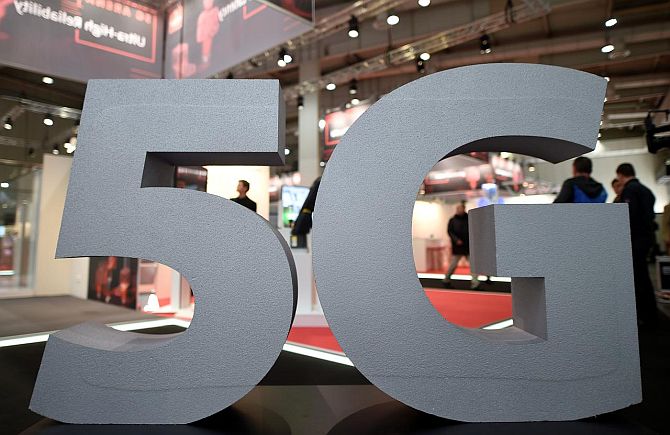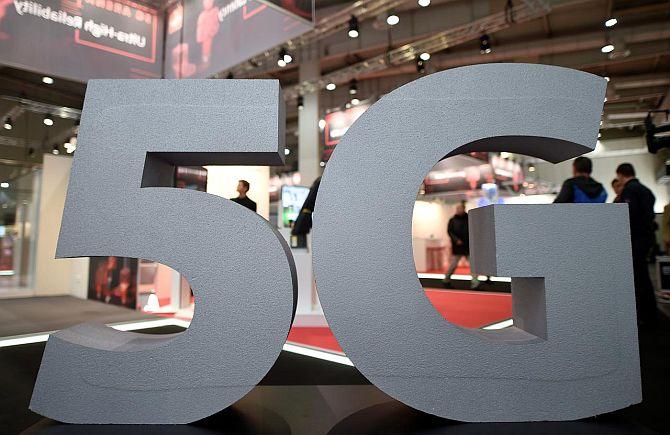Several factors have held India back. One is DoT policy somersaults and lack of clarity on whether to or not to ban Chinese gear makers.
India’s date with 5G was proclaimed with fanfare in June 2019 when Communications Minister Ravi Shankar Prasad said that spectrum for trial runs would be allocated to operators in 100 days. Twenty months later, forget spectrum auctions or the actual rollout of commercial services. Operators are still waiting for the go-ahead for 5G trials.
What critics call the government’s casual attitude came in for criticism last week when a report by a Parliamentary Panel headed by Congress MP Shashi Tharoor slammed its ‘laidback’ approach and trial delays.
The committee pulled up the department of communications for insufficient preparation for launching 5G. It said India, after missing the 2G, 3G, and 4G buses, looked set to miss the 5G bus too. The reprimand came in response to the DoT saying India would only see some partial 5G deployment by the end of this year or early 2022.
India has lost out on 5G leadership. Over 140 operators in 63 countries already run commercial 5G services, according to the Global mobile Suppliers’ Association. China has rolled out 5G in over 50 cities and has over 200 million customers. This year, it will be adding 600,000 5G towers and launching industrial applications.
Contrast this with June 2019 when only 26 operators in 16 countries offered some kind of 5G service.
The delay has prompted Nokia and others to say there may be no need for 5G trials at all as the technology is now proven and live in many countries.
“It would have made sense earlier when 5G was being introduced globally but now it’s an established technology. India is using the same bands — 3,500 MHZ — as countries like the US and Europe,” said Amit Marwah, head of marketing and corporate affairs at Nokia India.
The view was partially endorsed by S P Kochhar, director general of the Cellular Operators Association of India, who said while some felt there was now no need for trials, others disagreed. In fact, 5G technology is moving on. Telcos are upgrading from 5G non-standalone (in which you can use the existing 4G core) which can offer higher speeds to power mobile broadband last mile connectivity in homes.
Instead, they are moving to standalone 5G networks that will enable machine-to-machine services, automation services, and remote robotic services which will be a future revenue source for telcos.
Several factors have held India back. One is DoT policy somersaults and lack of clarity on whether to or not to ban Chinese gear makers.
It was only in December 2019 that the DoT asked telcos to give applications with their OEMs for trials. Despite US pressure, there was no ban on Chinese gear makers and the operators tied up either with Huawei or ZTE in certain cities for trials and made presentations in January 2020.
But by June-July, with rising border tensions with China, the operators decided to play safe. They handed in an additional application with a non-Chinese operator in cities where they already had an application with the Chinese.
Meanwhile, Reliance Jio, keen to test its indigenous 5G technology, asked for special trial spectrum in Delhi and Mumbai. This was met with silence. Jio had no option but to go to Verizon in the US in October to test its technology on a live network before selling it globally.
Then came a surprise for the industry in September when Minister of State for Electronics and Information Technology Sanjay Dhotre said the government had no plan to exclude China from 5G infrastructure deals. At the end of last month, Prasad reiterated that trial spectrum will be given soon and the 4G core should be made in India.
A second factor in the delay has been competing claims for the 3300-3600 spectrum. The Trai had earmarked 300 MHZ of spectrum, which is clearly enough for the three main operators (100 MHZ is the minimum requirement for 5G).
But the problem was other claimants such as the departments of space and defence demanding 125 MHz together. If they do not vacate this band, there will not be enough spectrum to power 5G for the three telcos. A panel headed by cabinet secretary Rajiv Gauba is still struggling to find a solution.
Without the issue being resolved, there can be no 5G auction. And unless auctions get going by July, it is unlikely for the rollout to happen by year-end.
Thirdly, the telcos haven’t helped matters either, having been at loggerheads on the right timeframe to take the 5G plunge.
For instance, Airtel’s Sunil Mittal said 5G was still two to three years away. Yet just a few days ago, Airtel demonstrated 5G services in a limited area in Hyderabad, saying its network was ready.
Jio is ready to roll out by the end of this year if spectrum is given. Vodafone Idea, with all its financial problems, is unlikely to go in for 5G, say analysts.
However, Kochhar has a different take on the whole issue.
“Telcos can offer 5G by using existing spectrum also. But the key is, are they enough use cases to launch 5G services as a business as most of it will be for industrial use?” he said.
Some think he has a point as even globally, many use cases such as autonomous cars, machine-to-machine operations, and remote surgery are still under development. For some analysts, it makes sense for India to delay 5G.
For one, 4G services, which many are still investing in, are here to stay for another 3-5 years.
A senior executive with an Indian telco agreed with this view.
“5G can surely be used to expand broadband in homes by using wireless in the last mile instead of fibre which takes a lot of time. That has been the first main use case in most countries, so why should India be any different?” he asked.
Source: Read Full Article

